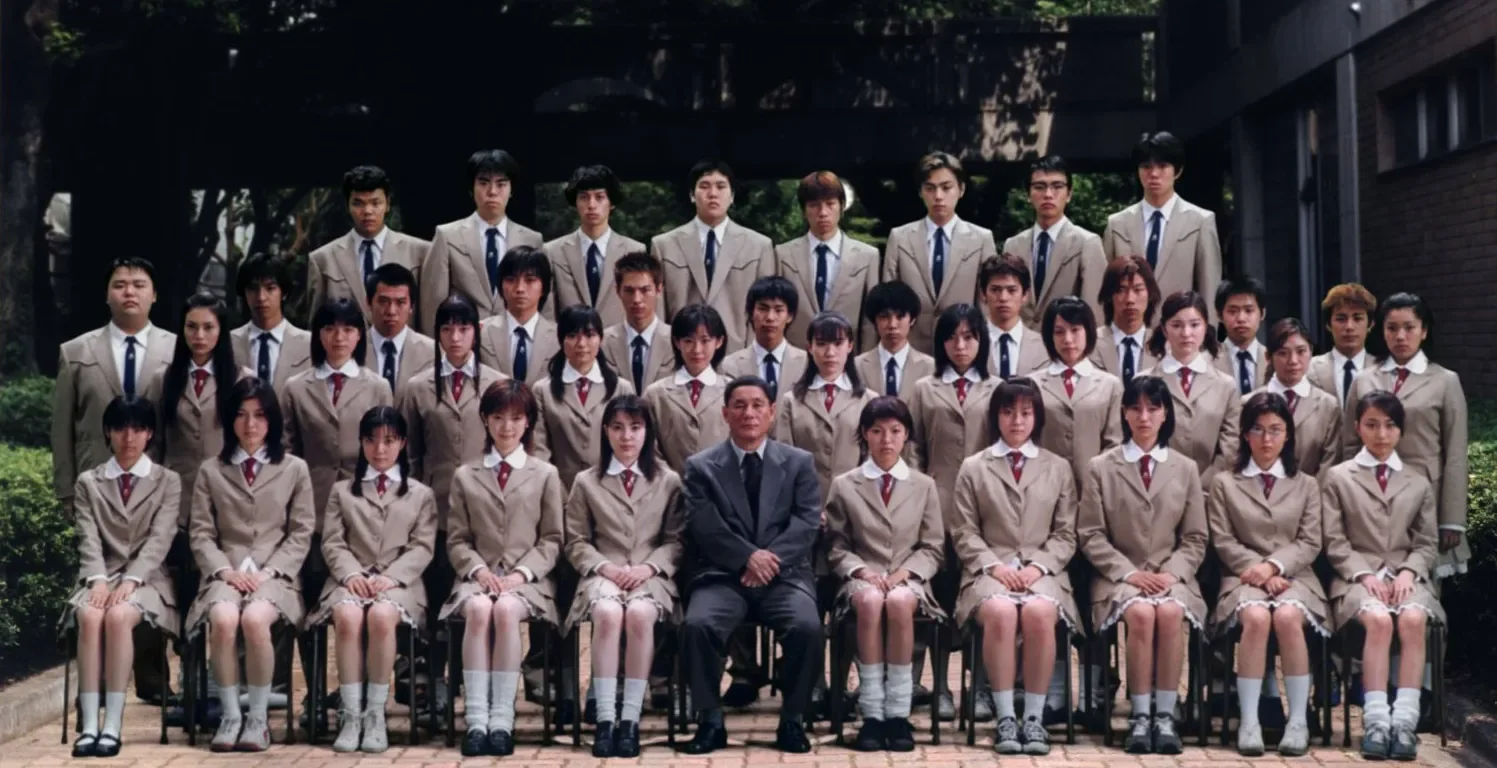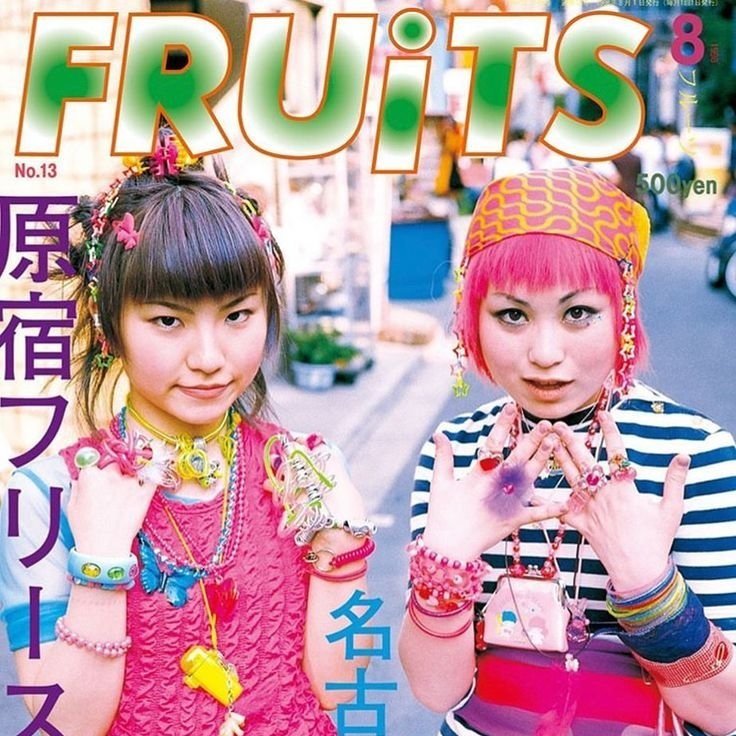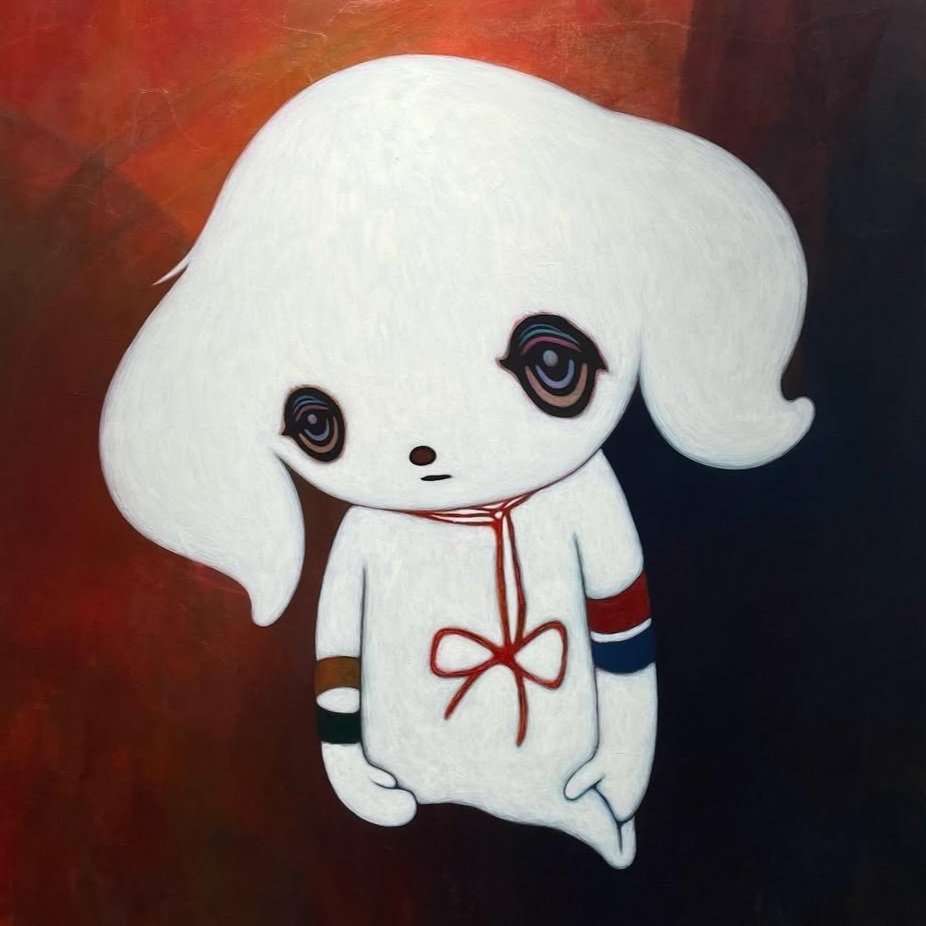Battle Royale Turns 25
The Legacy of Kinji Fukasaku’s Cult Detonation
Battle Royale│© Toei
When Battle Royale premiered in December 2000, Japan was already convulsing with anxiety about its youth. Japan’s “lost decade” had hollowed out faith in stability, while headlines about juvenile crime, most infamously the 1997 Kobe murders, fed fears of a generation unmoored. Into that climate, Kinji Fukasaku released a story where the state literally sends a class of 42 students to hunt each other on a deserted island. What might have been pulp dystopia became a cultural x-ray, forcing audiences to look at the uneasy fracture line between authority and adolescence.
At the center stood Takeshi Kitano, Japan’s most paradoxical star. Known both as Beat Takeshi, the comedian who hosted slapstick TV, and as the director of icy gangster dramas, Kitano brought an unsettling authority to the role of the teacher who oversees the carnage. His performance is restrained but loaded, making him less a villain than a grim avatar of the adult world’s cynicism. His presence reframes the death game not as the logical extension of a society that has already given up on its youth.
Kōshun Takami’s Provocation
Before Kinji Fukasaku ever pointed a camera, Battle Royale existed as a novel by Koshun Takami, published in 1999 after being shortlisted (but rejected) in a major literary competition. Takami’s book depicted a near-future Japan where the government annually forces a class of students into state-sanctioned combat. Written in terse, unsentimental prose, it combined pulp violence with political allegory, drawing immediate criticism from educators and politicians who accused it of glorifying juvenile brutality. Yet its unapologetic extremity resonated with readers, especially younger ones who felt alienated by Japan’s rigid systems.
The novel’s notoriety set the stage for the film adaptation. By the time Fukasaku secured rights, Battle Royale was already infamous, ensuring the film would enter public debate with a built-in charge. What Fukasaku added was his wartime sensibility, his chaotic visual grammar, and a cast that spanned cult idols to arthouse auteurs.
Battle Royale│© Toei
Fukasaku’s War Memory and Japan’s youth crisis
Fukasaku’s directing choices were inseparable from his biography. Drafted into a munitions factory as a teenager during WWII, he survived American air raids by hiding under the corpses of his classmates. From that point, he claimed, he never trusted adults again. Battle Royale carries that imprint in every shaky handheld shot, every chaotic scramble across the island where authority doesn’t protect the young.
This dovetailed with the politics of 2000, when Japan’s Diet lowered the age of criminal responsibility from 16 to 14. Battle Royale became an incendiary allegory for the state’s new willingness to “discipline” youth through punitive spectacle. The R-15 rating controversy, debated in parliament, only sharpened the irony: a film about state repression was itself repressed.
At home, Battle Royale was controversial; abroad, its reputation grew precisely because it was inaccessible. Toei withheld a U.S. release for years, making the film a whispered object of desire among cinephiles. By the time it arrived officially in 2011, it was already legendary.
No figure illustrates this better than Quentin Tarantino. He has frequently called Battle Royale one of his favorite films of the era, admiring its mixture of nihilism and gallows humor, even expressing his desire to have directed the film himself. His admiration was not theoretical: casting Chiaki Kuriyama in Kill Bill Vol. 1 was a direct homage, transplanting the sadistic schoolgirl Chigusa into the pop-iconic Gogo Yubari, carrying the DNA of Fukasaku’s vision into a new revenge myth.
Battle Royale’s influence, however, extended far beyond Tarantino. The “last survivor” structure, shrinking safe zones, and randomized weapons became the design template for modern multiplayer games like PUBG, Fortnite, Apex Legends, and Warzone. Even the term “battle royale” entered global vocabulary because of Fukasaku’s film. Even the debates around The Hunger Games (was it homage, coincidence, or theft?) highlight how inescapable the template had become.
Two visions of the same nightmare
The film exists in two principal cuts. The theatrical version (113 minutes) is stripped and clinical, offering no emotional cushioning. The Special Edition (122 minutes) adds flashbacks, digital blood, and epilogues, particularly a basketball game that reframes the class as once-unified. These additions tilt the story toward elegy, but critics remain divided: is the expanded cut a deepening of theme or a dilution of impact? Either way, the split demonstrates the difficulty of packaging a story this raw for different audiences.
In 2021, Arrow Films and Toei scanned the original camera negative in 4K, restoring color and grain under the supervision of Kinji’s son, Kenta Fukasaku. That work underpins the 25th anniversary theatrical re-release in October 2025, when Lionsgate and Iconic Events will screen the 4K restoration across North America. For many, it will be the first chance to see Fukasaku’s imagery on the big screen.
A quarter century on, Battle Royale is no longer just a Japanese cult film. It is a lens through which to examine how societies discipline youth, how spectacle masks violence, and how entertainment systems feed off fear. Kitano’s detached smirk, Tarantino’s cinematic homage, the millions of gamers who casually enact its structure every day, all are fragments of its legacy.








Wenders wanders a city racing forward, searching for Ozu’s stillness.